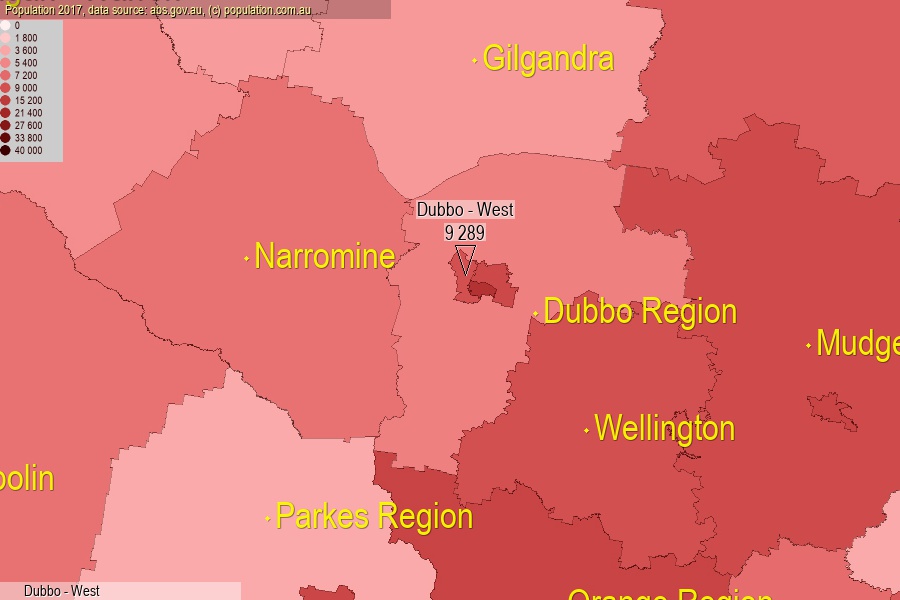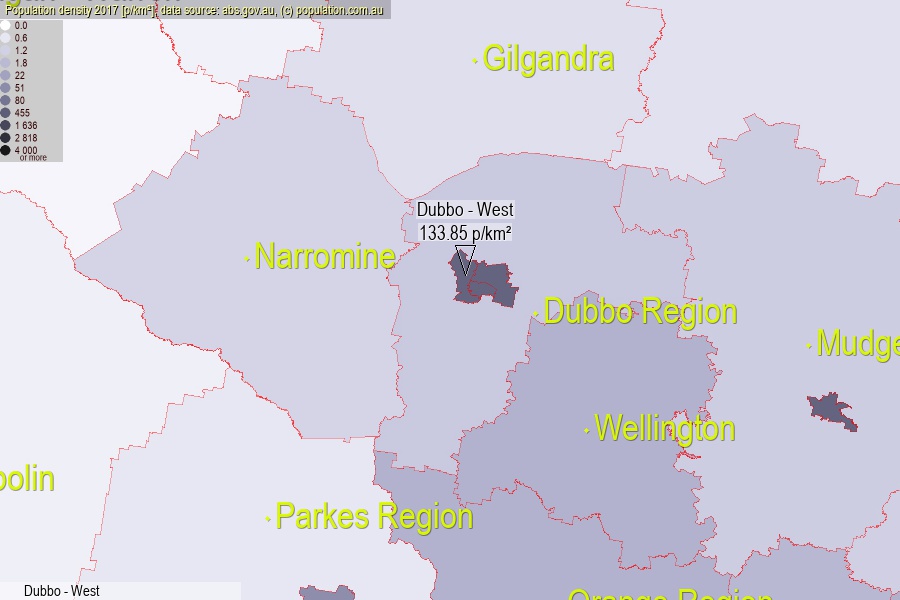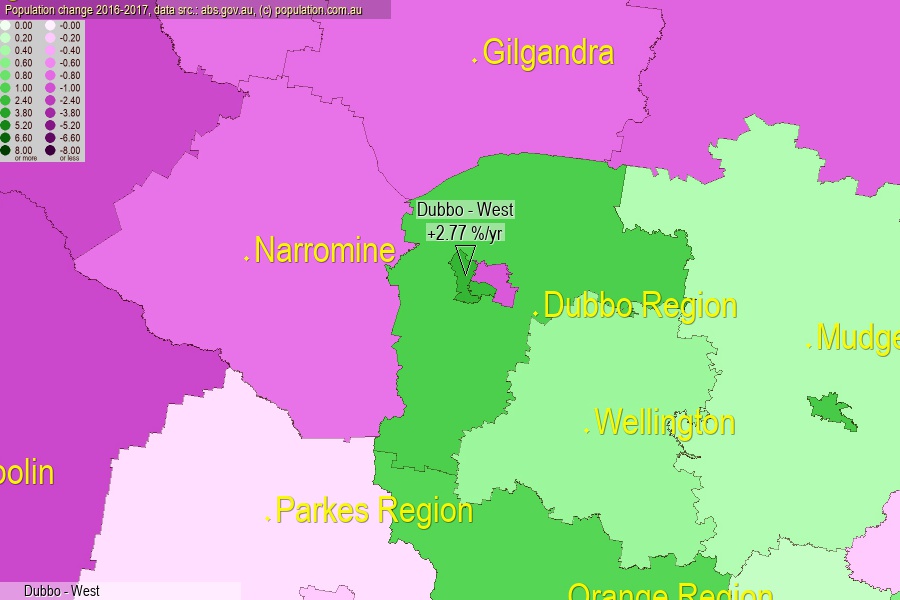 population.com.au
population.com.auLast official estimated population of Dubbo - West (as Statistical Area Level 2) was 9 289 people (on 2017-06-30)[2]. This was 0.04% of total Australian population and 0.117% of NSW population. Area of Dubbo - West is 69.40 km², in this year population density was 133.85 p/km² . If population growth rate would be same as in period 2016-2017 (+2.77%/yr), Dubbo - West population in 2025 would be 11 555. [0]



Click to enlarge. Dubbo - West is located in the center of the images.
Population [people], population density [p./km²] and population change [%/year] [2]
View borders » (new window) [4]
[1991-1992] +0.40 %/Yr.
[1992-1993] +0.38 %/Yr.
[1993-1994] +0.45 %/Yr.
[1994-1995] -0.47 %/Yr.
[1995-1996] +0.29 %/Yr.
[1996-1997] -0.67 %/Yr.
[1997-1998] +0.54 %/Yr.
[1998-1999] +2.60 %/Yr.
[1999-2000] +0.87 %/Yr.
[2000-2001] +0.92 %/Yr.
[2001-2002] +0.59 %/Yr.
[2002-2003] +0.35 %/Yr.
[2003-2004] +0.53 %/Yr.
[2004-2005] +0.40 %/Yr.
[2005-2006] +0.92 %/Yr.
[2006-2007] -1.03 %/Yr.
[2007-2008] +0.36 %/Yr.
[2008-2009] +1.78 %/Yr.
[2009-2010] +2.49 %/Yr.
[2010-2011] +1.06 %/Yr.
[2011-2012] +3.00 %/Yr.
[2012-2013] +3.53 %/Yr.
[2013-2014] +3.95 %/Yr.
[2014-2015] +3.24 %/Yr.
[2015-2016] +2.66 %/Yr.
[2016-2017] +2.77 %/Yr.
[0] Calculated with linear interpolation from officially estimated population
[1] Read more about SA2 and Australian Statistical Geography Standard (ASGS) on abs.gov.au
[2] Population data from Australian Bureau of Statistics (Population and density: 2017; change: 2016-2017)
[3] Digital Boundaries: Australian Statistical Geography Standard (ASGS) 2016.
[4] Border coordinates are simplifyed using Ramer-Douglas-Peucker algorithm.